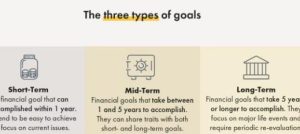Understanding Meeting Cadence: What Is It?
Defining Meeting Cadence
Meeting cadence refers to how frequently meetings are scheduled within an organization. It is a strategic framework that dictates the regularity and timing of these gatherings, aiming to optimize communication and workflow among team members. Establishing an effective meeting cadence is crucial for maintaining team alignment, ensuring progress on projects, and enhancing overall productivity.

Key Elements of an Effective Meeting Cadence
1. Determining the Frequency The frequency of meetings can vary widely depending on the team's objectives, the nature of the work, and the stage of the project. For instance, daily stand-ups or check-ins are common in agile environments, especially for teams that need constant updates on fast-moving projects. Weekly or bi-weekly meetings might be more appropriate for teams that require a longer runway to complete tasks before regrouping.
2. Setting the Purpose Each meeting should have a clear, defined purpose. Whether it’s to brainstorm, make decisions, update the team on progress, or solve specific problems, the purpose will guide the frequency and participants of the meeting.
3. Choosing Participants Involving the right people in meetings is essential. Overloading meetings with participants who do not contribute directly can lead to decreased productivity and wasted time. Typically, the decision on who attends is based on the meeting's purpose and the stages of the project involved.
4. Planning the Duration The length of a meeting should align with its agenda. Short, daily stand-ups might only last 15 minutes, while strategic planning sessions could span several hours or even a full day. It's vital to respect participants' time and ensure that meeting durations reflect the needs of the agenda.
Benefits of a Thoughtfully Structured Meeting Cadence
- Enhanced Communication: Regularly scheduled meetings ensure that all team members are up-to-date and have a platform to voice concerns and share updates.
- Better Time Management: By scheduling meetings strategically, teams can avoid the pitfalls of both under- and over-communication, making more efficient use of everyone’s time.
- Increased Productivity: A well-maintained meeting cadence can prevent projects from derailing and help teams to meet their deadlines more effectively.
- Improved Decision-Making: Regular interactions foster quicker decision-making, as there is less downtime between discussions and actions.
Common Pitfalls and How to Avoid Them
One of the main challenges in establishing a meeting cadence is finding the balance between too many and too few meetings. Excessive meetings can lead to fatigue and reduced productivity, whereas infrequent meetings may cause misalignments and delays in decision-making. To find the optimal cadence, teams should regularly review their meeting efficiency and adjust frequencies as needed based on the project phase and team feedback.
Implementing Your Meeting Cadence
Start by assessing the current effectiveness of your meetings. Gather feedback from team members, identify any gaps in communication, and adjust the frequency and format accordingly. Consider implementing different types of meetings (such as tactical, strategic, and review meetings) to address various needs.
Understanding what is meeting cadence is more than just scheduling—it’s about creating a rhythm that keeps your team engaged and moving forward efficiently. Implementing a thoughtful meeting cadence is essential for any team looking to enhance collaboration and drive results.
